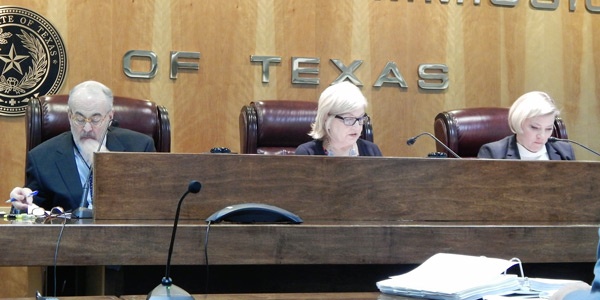By Tom Kleckner
AUSTIN, Texas — Texas regulators on Friday signed off on ERCOT’s plan to review its reliability standards and replace its loss-of-load expectation (LOLE) methodology for determining its reserve margin with one based on economics.
The Public Utility Commission agreed that a letter filed with the commission by ERCOT Director of System Planning Warren Lasher on Oct. 24 outlined a sound process. “Go forth and do good,” Chairman Donna Nelson said.
Commissioner Ken Anderson pointed out the project’s (Docket 43202) intention is to replace ERCOT’s LOLE methodology with the economic optimal reserve margin (EORM).
The LOLE is “not really baked into any of our rules, but it is baked into the protocols at ERCOT,” Anderson said.
ERCOT staff will go through its protocols to find language that needs to be modified and make changes “at the appropriate time,” Lasher replied.
In 2013, The Brattle Group and Astrapé Consulting conducted a study of the market’s EORM, which it defined as minimizing total system costs by weighing the cost of more generation to achieve higher reserve margins against decreasing scarcity-event-related costs.
Higher reserve margins help to avoid load shedding, reserve shortages, demand response calls and other emergency event costs, the study said.
The firms had to customize the study’s methodology, Lasher wrote, “to reflect the region’s unique energy-only deregulated wholesale market design and region-specific market behavior.”
The study simulated ERCOT’s recently implemented operating reserve demand curve. Lasher said that methodology and other study assumptions will need to be reviewed by ERCOT and stakeholders “if the results of future EORM studies are to be used in place of the existing target reserve margin.”
Lasher’s proposal involves conducting workshops with market participants in the first half of 2017 and completing its next EORM study in 2018 based on the documented methodology. He recommended future EORM analyses be conducted every other year coincident with NERC’s required LOLE studies.
Following the 2018 EORM study, Lasher said ERCOT would amend its market rules as appropriate to accommodate the move to a target reserve margin based on EORM criteria, and away from the one-event-in-10-years LOLE.
“Currently, NERC has two numbers that go to them,” Lasher told the PUC. “First, what the region says is an appropriate reserve-margin expectation. That’s whatever the region wants to define it as. Some regions use the economic optimal number.
“NERC also has a standing data request every year for the region to say, given our expectations for the reserve margin, what will actually be the expected unserved energy with that margin.”
Lasher said ERCOT conducted loss-of-load probabilistic studies in 2014 and 2016 to comply with data requests from NERC and the Texas Reliability Entity. The ISO worked directly with Astrapé to complete the studies, using the same models and assumptions comparable to those employed for the 2013 study.
The commissioners debated whether to have ERCOT continue providing its regular capacity, demand and reserves (CDR) report until the new reliability standards are in place, without coming to a decision.
“The CDR is at the heart of the problem, because its load assumptions are beyond four years,” Anderson said.
Anderson suggested ERCOT take the 2013 study results and incorporate them in the CDR, using the economical, optimal and expected equilibrium as information data points. Lasher noted ERCOT’s May CDR didn’t provide data for a target reserve margin, but he said staff could include the Brattle study’s results.





